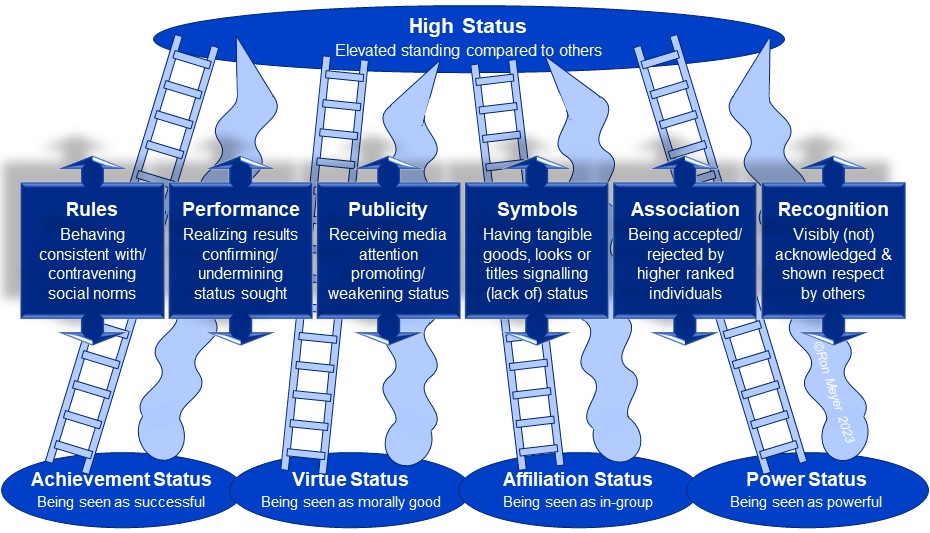A person’s or organization’s status is their standing compared to others – it is how they are ranked in the eyes of the people around them. As this relative standing is based on perceptions and reputation, status is not static, but changes over time and can be influenced.
Status can be derived from four key sources: From being seen as successful at a particular endeavor (achievement status), from being seen as morally good (virtue status), from being seen as member of a desirable group (affiliation status) and from being seen as powerful (power status). These are described in more detail in model 46 (Ambition Radar Screen).
The Status Snakes & Ladders framework outlines the six key factors influencing whether people and organizations gain or lose status. The name of the framework is a reference to the old board game Snakes and Ladders, in which participants can slide down away from the finish line or can take a shortcut up towards the finish by climbing a ladder. The framework’s key message is that the same up and down dynamic is true when it comes to status. However, in the board game everything depends on a roll of the dice, while in the status game there are six levers that can consciously be pulled to accelerate someone up or down. All six levers can be used by the people or organizations themselves, but also by those around them.

The six levers for increasing or decreasing someone’s status are the following: